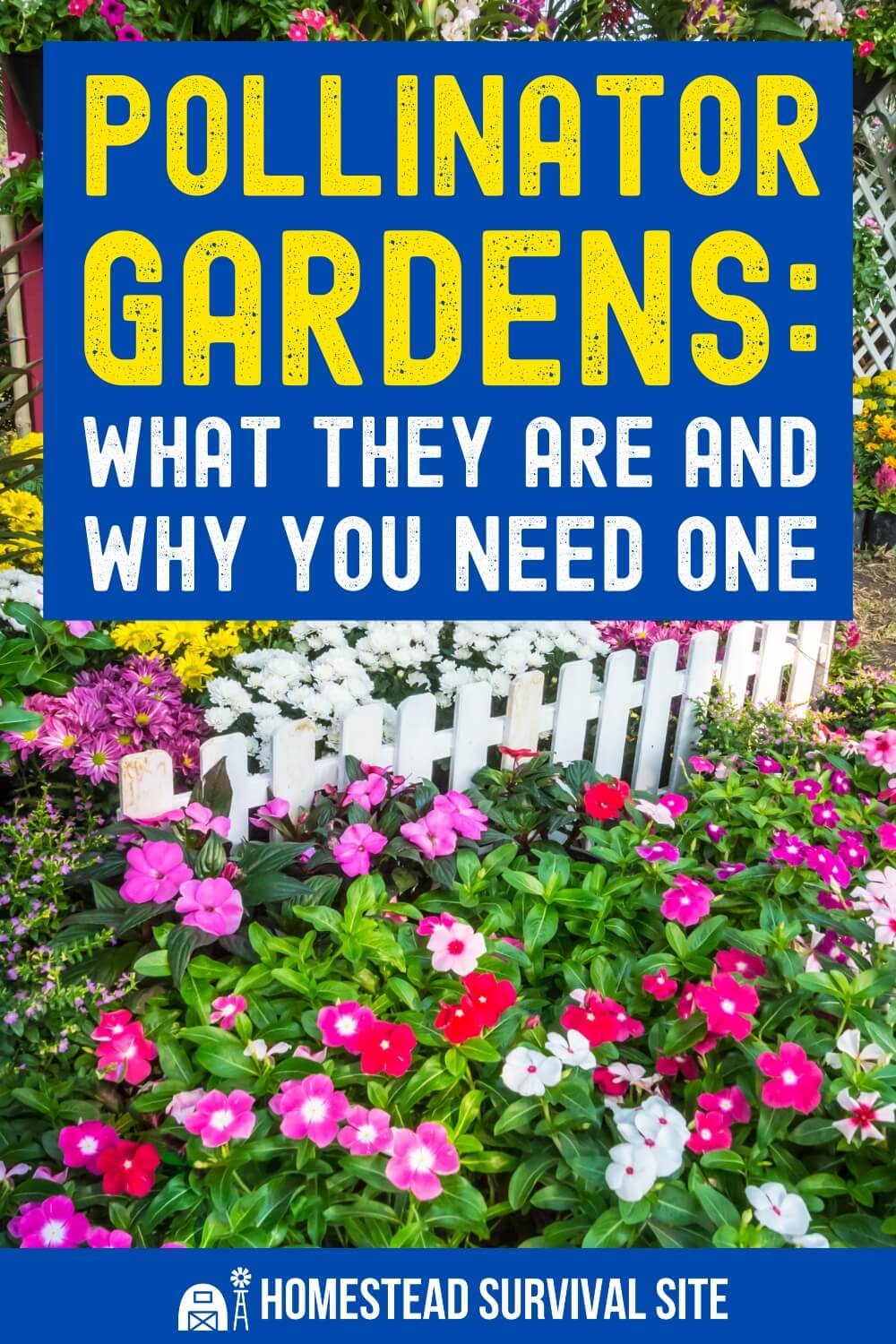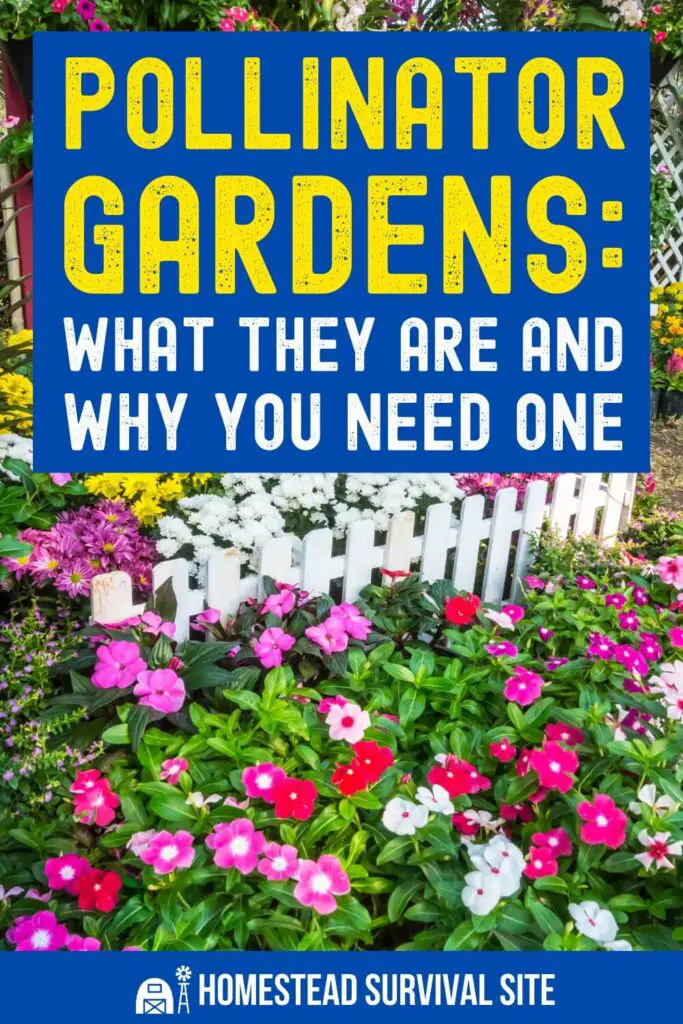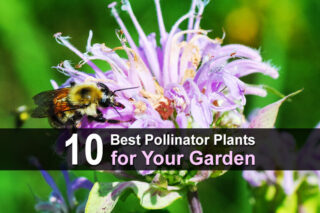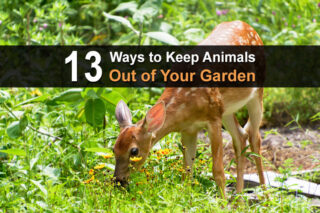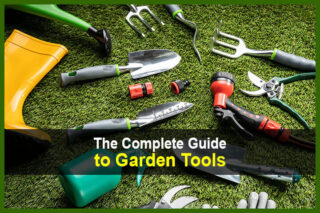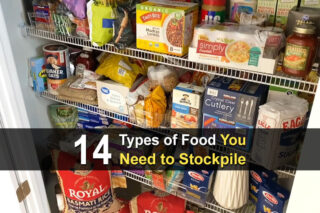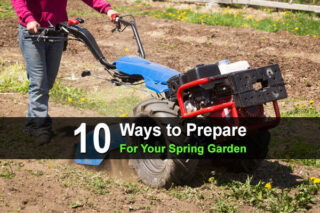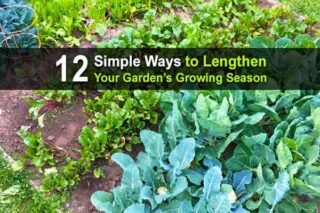Estimated reading time: 6 minutes
You may have heard a lot of other homesteaders chatting about their pollinator garden. It seems that everyone is using pollinator plants to help both their home and local environments.
A pollinator garden challenge was recently launched to encourage more use of native plants in the garden that help create a stronger ecosystem. Using native plants that naturally grow in your area is an excellent way to start a pollinator garden.
But what is a pollinator garden? How do you know which plants will do well in your area? What if you want to attract certain pollinators to a specific spot on your homestead? Read on to learn what pollinator gardens are and why you need one on your homestead.
Want to save this post for later? Click Here to Pin It on Pinterest!
What Is A Pollinator?
Most of us can guess that the most popular pollinators are butterflies and bees, but there are probably many more pollinators in your area than you are aware of.
For example, did you know that those pesky flies on the homestead can be a pollinator? Hummingbirds are also a common pollinator as well as moths, ants, and even bats. Beetles, other birds, and even mosquitoes can be pollinators, although many of us would like less mosquito activity on the farm.
There are also those pollinators that indirectly help the environment. Larger animals such as deer, bears, and even dogs and cats carry pollen when they brush up against a plant. The wind is also a common pollinator as well as humans that either purposely or accidentally pollinate plants.
What Is A Pollinator Garden?
Simply put, a pollinator garden is an area with flowers that provide pollen or nectar for pollinating insects. These plants provide vital nutrients that keep insects alive and sustain them throughout the year. They also offer a safe habitat that is free from chemicals to help support the pollinator population.
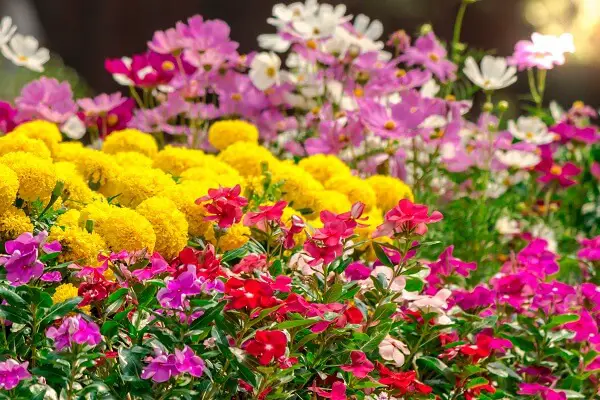
Your pollinator garden can be a small pot of plants that sits on your porch or an ample space that you have dedicated on your land for pollinators to use. Most pollinator gardens focus on attracting those flying pollinators that can then share the love by pollinating neighboring plants. The size and style of your garden are totally up to you.
What Should I Plant in A Pollinator Garden?
Your best bet is to use flowers that are native to your area. While many flowers grow naturally over a wide range of the country, some flowers are going to do better than others. Look up native flowers for your region and start with those that will be familiar to insects in your area. Native plant options will be able to tolerate your climate better and won’t require much extra watering.
You can then choose a wide variety of flowers in your pollinator garden to help attract a better mix of pollinating insects. While we all have flowers that we tend to love more than others, make sure to use a good variety of sizes and shapes that will attract more pollinators to your land.
This will help attract different pollinators that will visit different blooms all around your homestead. Premixed bags of pollinator seeds are also available that provide a good mixture of pollinator plants that take the guessing game out of knowing what to plant.
For example, hummingbirds frequent bright blooms that have a long tubular shape. The Monarch Butterfly requires the use of Milkweed for caterpillars who feast on only the leaves of this vital plant.
Milkweed has become an essential part of homesteading to help combat the recent decline in the North American Monarch Butterfly population. Other butterflies will also visit Milkweed and Butterfly Weed planted in a pollinator garden.
Bee Balm will attract important honey bees to your homestead as well as Coneflowers that are frequently used to attract pollinators. Those blooms that provide a large area to perch attract butterflies who like to sit while they drink nectar as well.
Where Should I Plant a Pollinator Garden?
Choose a spot on the homestead that receives plenty of sunshine but also has some sort of shelter from the wind. This could be on the side of a shed or barn or even a spot in the yard surrounded by larger trees or vegetation.
Planting a few different pollinator gardens around the homestead will help encourage those visiting pollinators to stay and pollinate other significant blooms in your vegetable garden and orchard as well.

How Long Will A Pollinator Garden Last?
There are many perennials that you can plant in a pollinator garden that will come back year after year. Many homesteaders like to plant perennials that will bloom at different parts of the year.
Early Bloomers
Choosing those flowers like the daisylike Lanceleaf Coreopsis that provides an early feast of nectar to hungry bees in early spring. Peony and Clematis are also good options for those early opportunities to provide energy to pollinators. Bluebells are another dainty flower that includes curled leaves that are perfect for adding some charm to the homestead.
Long Bloomers
Coneflowers are great to use as they bloom for an extended period as well. Blazing Star is a popular pollinator option that provides tall spikes of color as well as plenty of opportunities to view the beautiful butterflies that will frequent its blooms.
Late Bloomers
Asters are smaller blooms that arrive late in the season, making them an excellent option for pollinator gardens. These flowers help provide a food source for both butterflies and bees that will need the extra energy going into winter.
Joe Pye Weed is another late bloomer that will help feed essential visitors to your pollinator garden. Goldenrod provides a bright yellow color to any garden during the fall and its golden blooms provide a nice buffet before winter.
Remember that you can also stagger planting certain varieties that will bloom at different times, which can provide more opportunity to feast for local pollinators. Another important part of a pollinator garden is to refrain from using any type of pesticide or chemical on the area. Keep the pollinator a natural area that will keep pollinator healthy and happy.
Choosing to add a pollinator garden to your own homestead is an easy decision. Not only will you add beautiful flowers to your land, but you will also attract those important pollinators who are flying by. These pollinators will then stop and visit other blooms in the garden and orchard that will become food for the family.
Pollinators are a critical part of a successful homestead and should be welcomed all throughout the year for the good of the environment and the good of your own survival.
Like this post? Don't Forget to Pin It on Pinterest!

